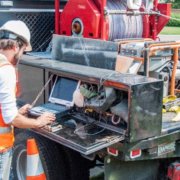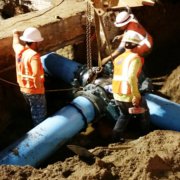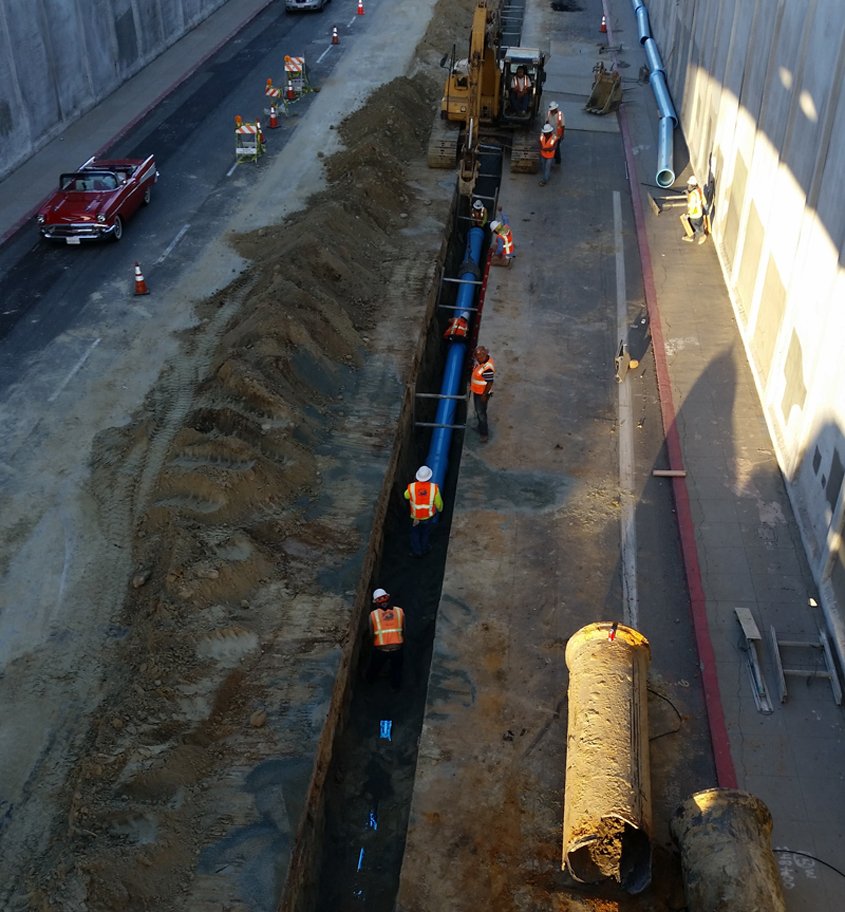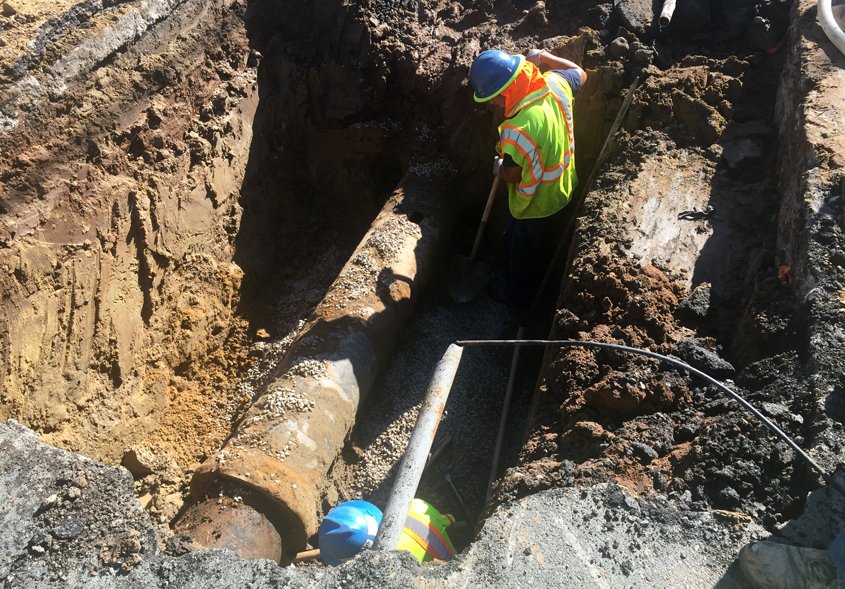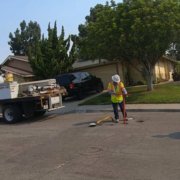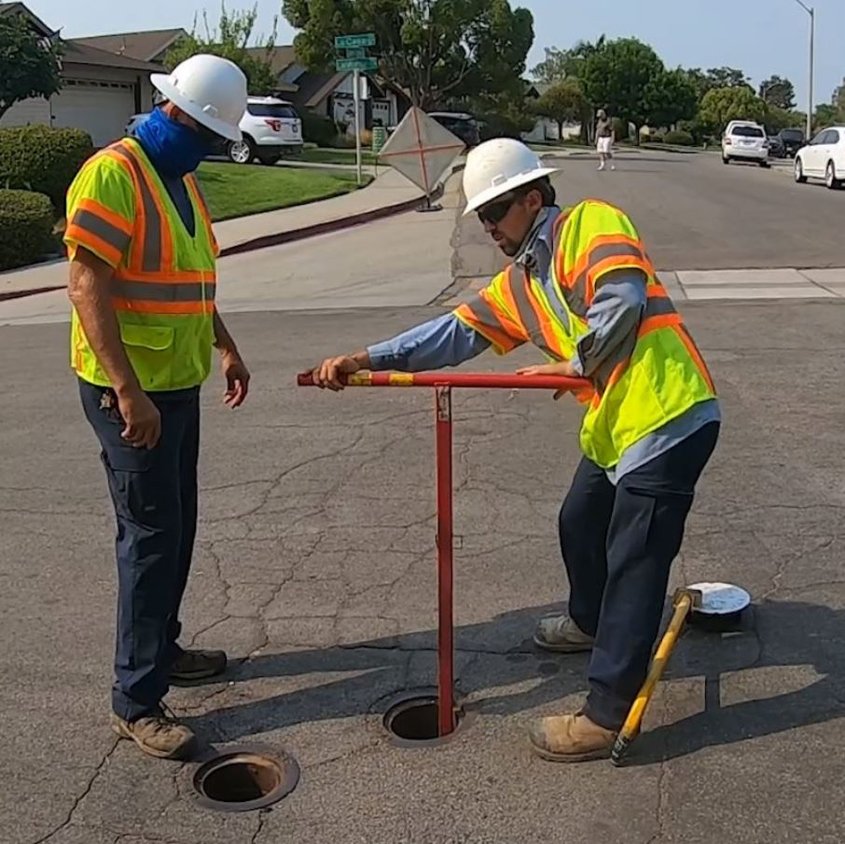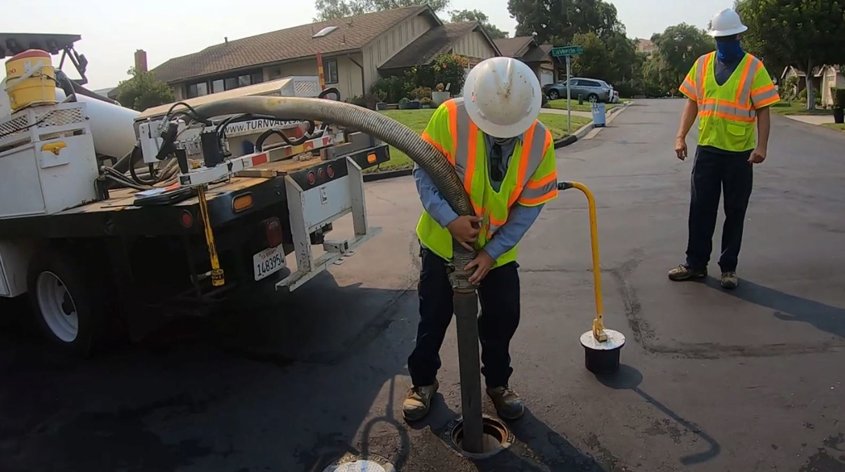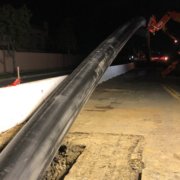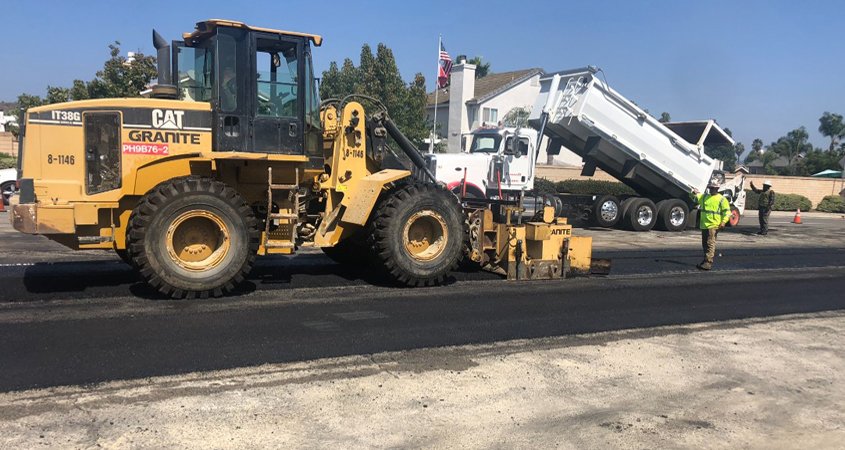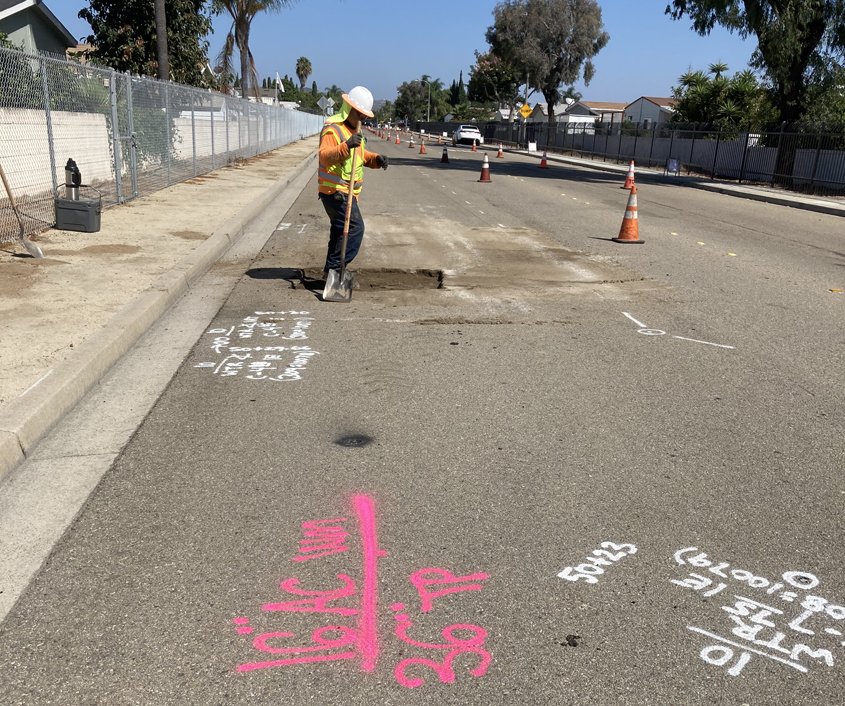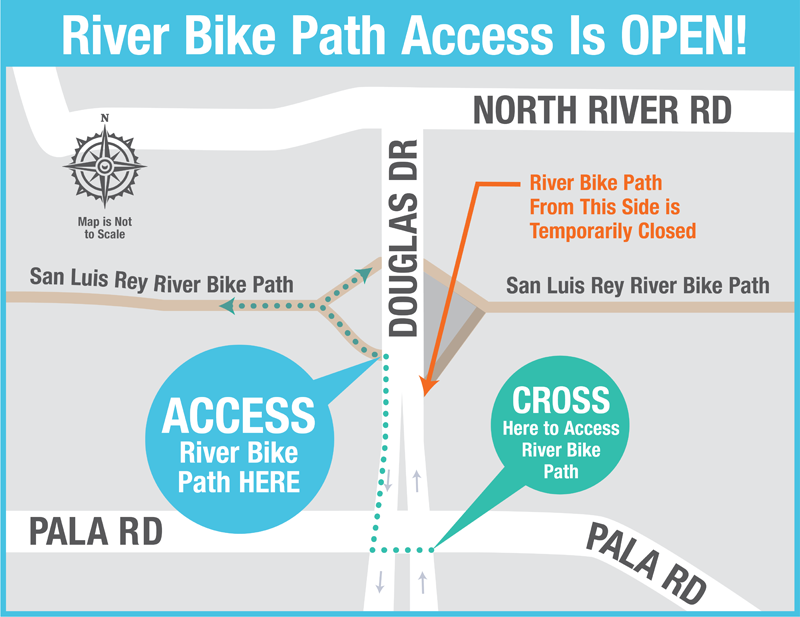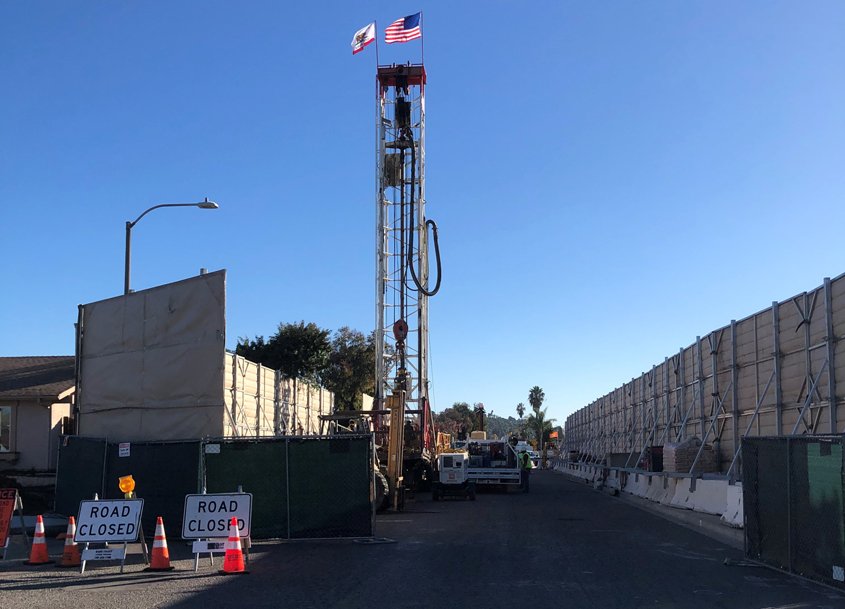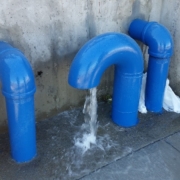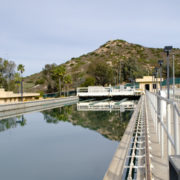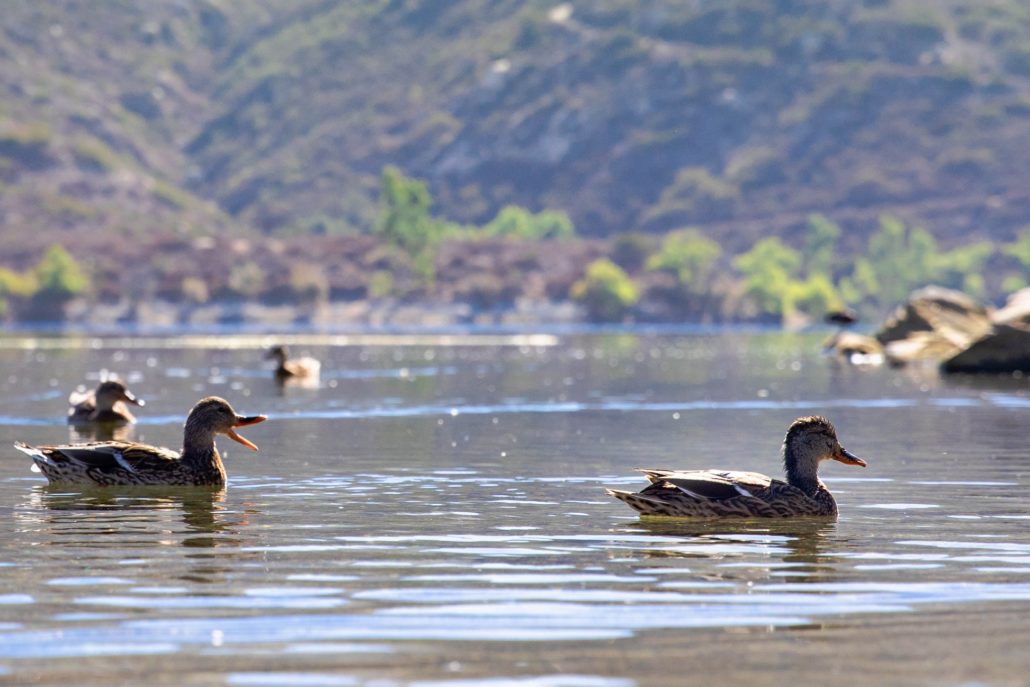Vallecitos Water District Taps Tech for Pipeline Inspection
The Vallecitos Water District is using a specialized camera and sonar to evaluate the condition of a sewer pipeline between San Marcos and Carlsbad.
The Land Outfall West pipeline is a large sewer line that stretches from El Camino Real to the Encina Water Pollution Control Facility in Carlsbad. Originally installed in 1986, an evaluation of the pipeline’s current condition using closed-circuit TV (CCTV) cameras and sonar will help the District identify and prioritize its ongoing pipeline renewal and maintenance activities.
Inspections help ensure system reliability
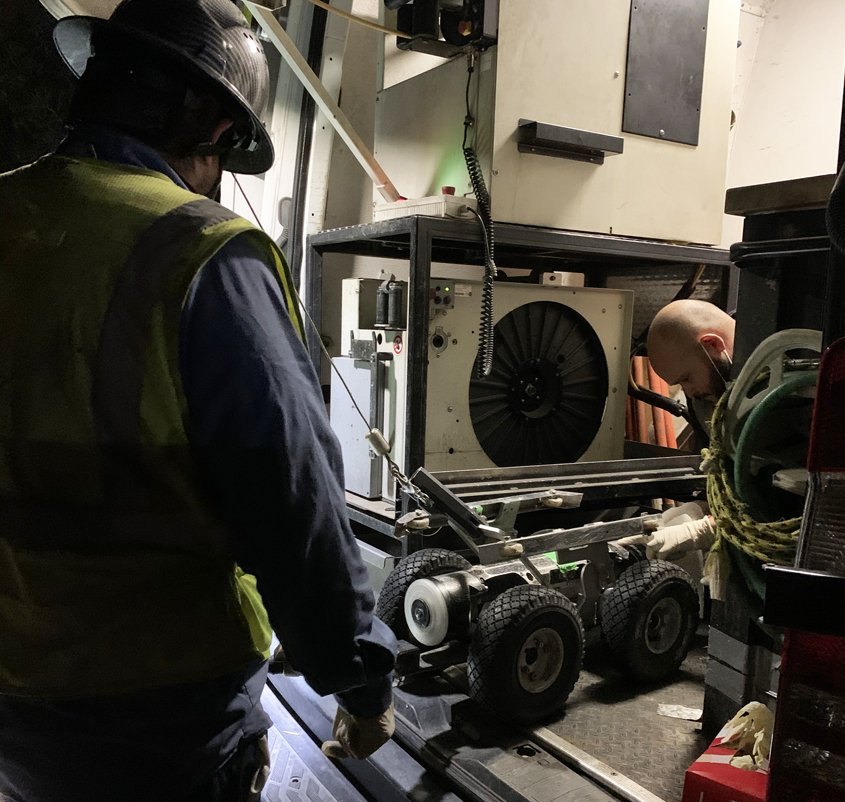
Field teams begin the inspection process, which is taking place at night to minimize disruption. Photo: Vallecitos Water District
The pipeline ranges in size from 24-inches to 54-inches in diameter and is approximately 3.2 miles long. Project Manager Susan Bowman said today’s technology allows the District to perform thorough inspections without digging up streets and disrupting neighborhoods.
“We want to make sure the pipeline is still in good shape,” explained Bowman, who is the District’s asset management supervisor. “We’re going to be taking a look at the inside of the pipe using an advanced CCTV tool. It looks at all of the insides of the pipeline and identifies any flaws or maintenance issues that may need to be addressed.”
Bowman said the District regularly inspects manholes and performs routine inspection activities. Using cameras and sonar will provide more detailed information to help the District plan ongoing maintenance and repair to ensure the pipeline will continue to perform well.
District staff, consulting staff, pipeline inspectors, and environmental inspectors will be onsite during the work. Work started at the east end of the pipeline in Carlsbad, and will follow along Palomar Airport Road under Interstate 5, and end at the Encina Wastewater Treatment Plant.
Cost-effective and less disruptive
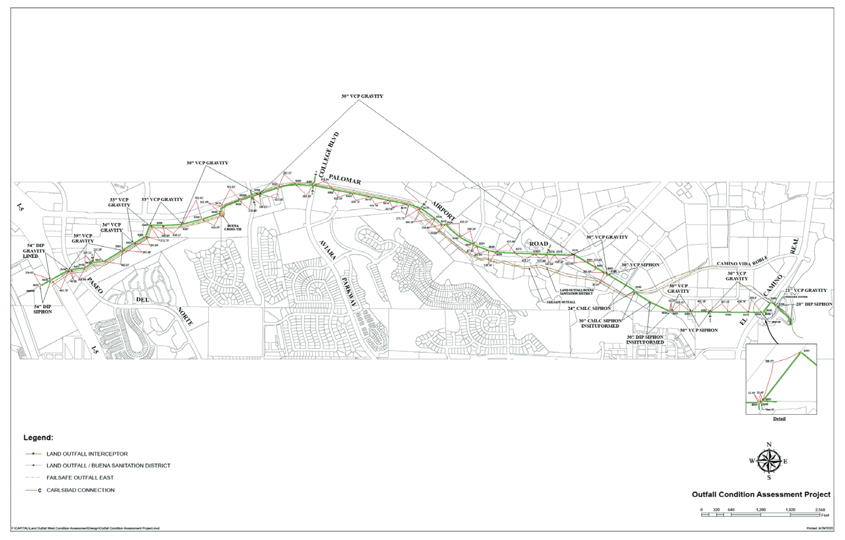
Map showing the 3.2 mile stretch of Vallecitos Water District pipeline undergoing inspection in June. Photo: Vallecitos Water District
To minimize traffic impacts and to take advantage of lower flow levels, all work is scheduled at night between 9 p.m. and 6 a.m. and will occur on weekdays through June 18. Bowman said most of the work should have limited impact on businesses and residents in the area, with minor compressor noise and limited street blocking along Palomar Airport Road.
Pipeline inspections tap tech
“We want to be good neighbors,” said Bowman. “But it is critical to ensure a pipeline is performing well, it is safe, and it is able to continue to do its job. It’s a cost-effective way to ensure the District’s assets are performing well. The technologies have really improved in the last 15 to 20 years.”
Previously, the only way to inspect a pipeline was to take it out of service and dig it up.
“If you’re going to dig something up to see what shape it’s in, you might as well be replacing it,” said Bowman. “We are definitely looking at a lot of these different noninvasive type of technologies. It helps the system perform better by reducing unplanned emergencies which are disruptive to all of us.”
(Editor’s note: The Vallecitos Water District is one of the San Diego County Water Authority’s 24 member agencies that deliver water across the metropolitan San Diego region.)

